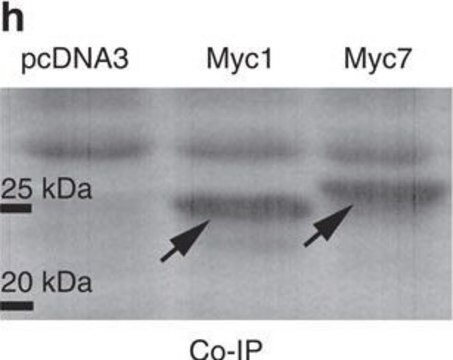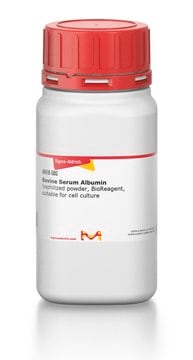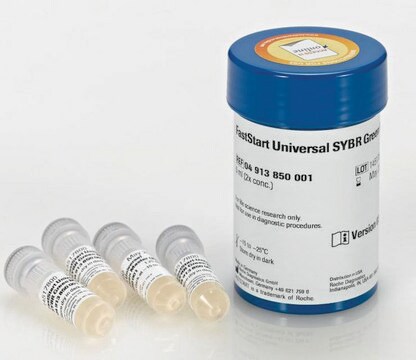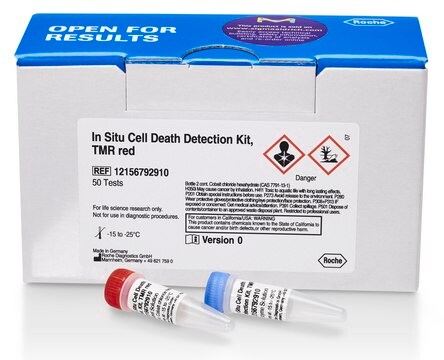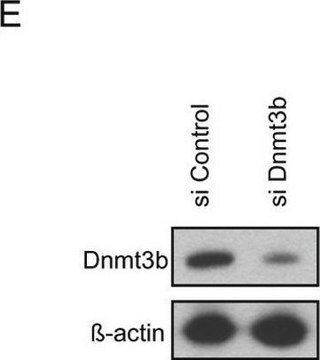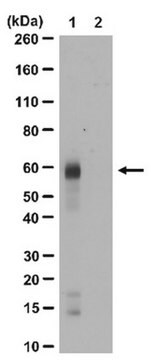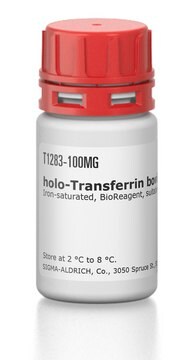ABE26
Anti-acetyl-c-Myc (Lys323) Antibody
from rabbit, purified by affinity chromatography
Synonyme(s) :
Myc proto-oncogene protein, Class E basic helix-loop-helix protein 39, HLHe39, Proto-oncogene c-Myc, Transcription factor p64, c-MYC
About This Item
Produits recommandés
Source biologique
rabbit
Niveau de qualité
Forme d'anticorps
affinity isolated antibody
Type de produit anticorps
primary antibodies
Clone
polyclonal
Produit purifié par
affinity chromatography
Espèces réactives
mouse, human
Réactivité de l'espèce (prédite par homologie)
rhesus macaque (based on 100% sequence homology), chimpanzee (based on 100% sequence homology)
Technique(s)
western blot: suitable
Numéro d'accès NCBI
Numéro d'accès UniProt
Conditions d'expédition
wet ice
Modification post-traductionnelle de la cible
acetylation (Lys323)
Informations sur le gène
chimpanzee ... Myc(464393)
human ... MYC(4609)
mouse ... Myc(17869)
rhesus monkey ... Myc(694626)
Description générale
Spécificité
Immunogène
Application
Peptide Inhibition Assay Analysis: A representative lot was used by an independent laboratory in HEK293T cells co-transfected with mouse wildtype c-Myc and P300. (Image courtesy of Dr. Ernest Martinez, Department of Biochemistry, University of California at Riverside.)
Epigenetics & Nuclear Function
Transcription Factors
Qualité
Western Blot Analysis: 0.2 µg/mL of this antibody detected c-Myc on 10 µg of transfected HEK293T cell lysates.
Description de la cible
Forme physique
Stockage et stabilité
Remarque sur l'analyse
Transfected HEK293T cell lysates
Autres remarques
Clause de non-responsabilité
Vous ne trouvez pas le bon produit ?
Essayez notre Outil de sélection de produits.
Code de la classe de stockage
12 - Non Combustible Liquids
Classe de danger pour l'eau (WGK)
WGK 1
Point d'éclair (°F)
Not applicable
Point d'éclair (°C)
Not applicable
Certificats d'analyse (COA)
Recherchez un Certificats d'analyse (COA) en saisissant le numéro de lot du produit. Les numéros de lot figurent sur l'étiquette du produit après les mots "Lot" ou "Batch".
Déjà en possession de ce produit ?
Retrouvez la documentation relative aux produits que vous avez récemment achetés dans la Bibliothèque de documents.
Notre équipe de scientifiques dispose d'une expérience dans tous les secteurs de la recherche, notamment en sciences de la vie, science des matériaux, synthèse chimique, chromatographie, analyse et dans de nombreux autres domaines..
Contacter notre Service technique
